Charles E W Bean, Diaries, AWM38 3DRL 606/236/1 - 1915 - 1918 - Part 2
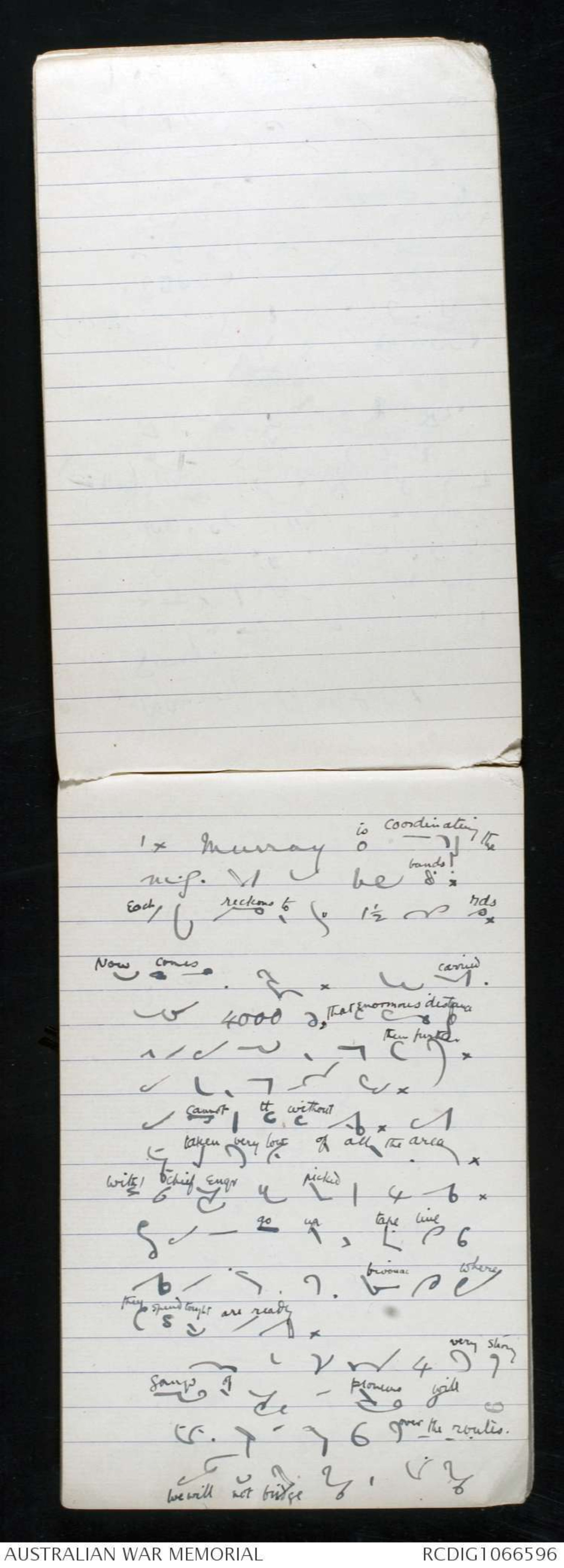
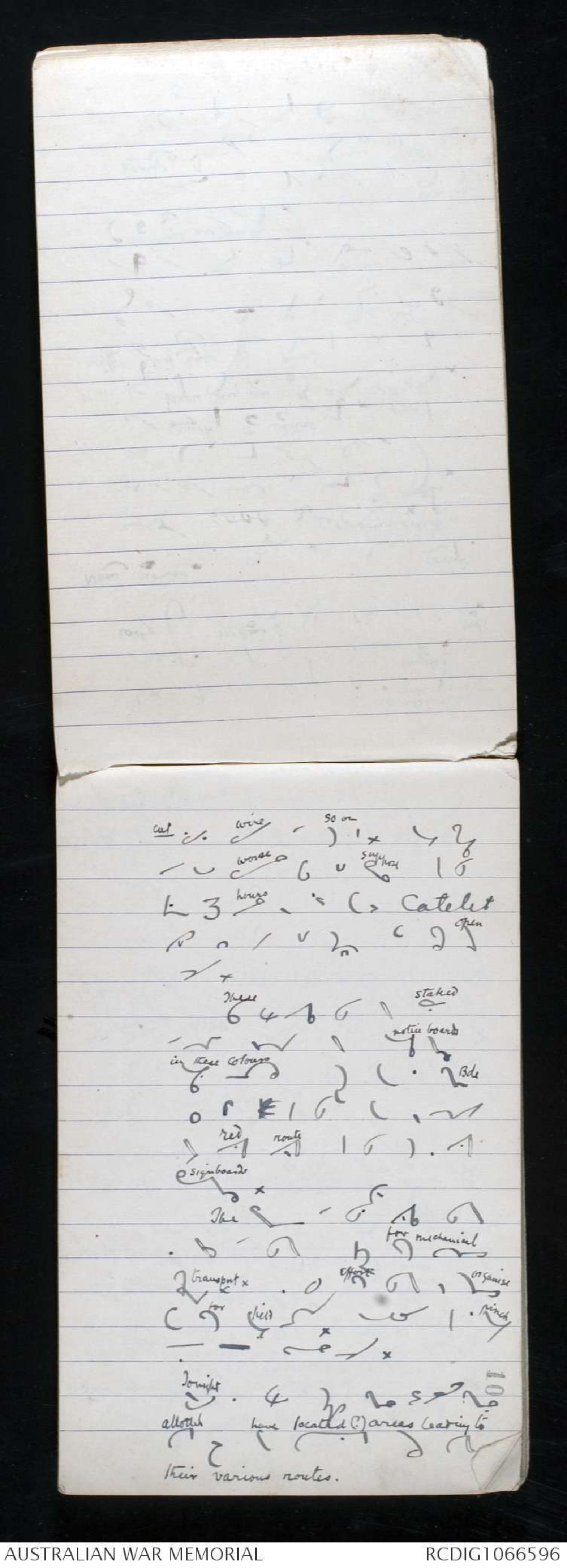
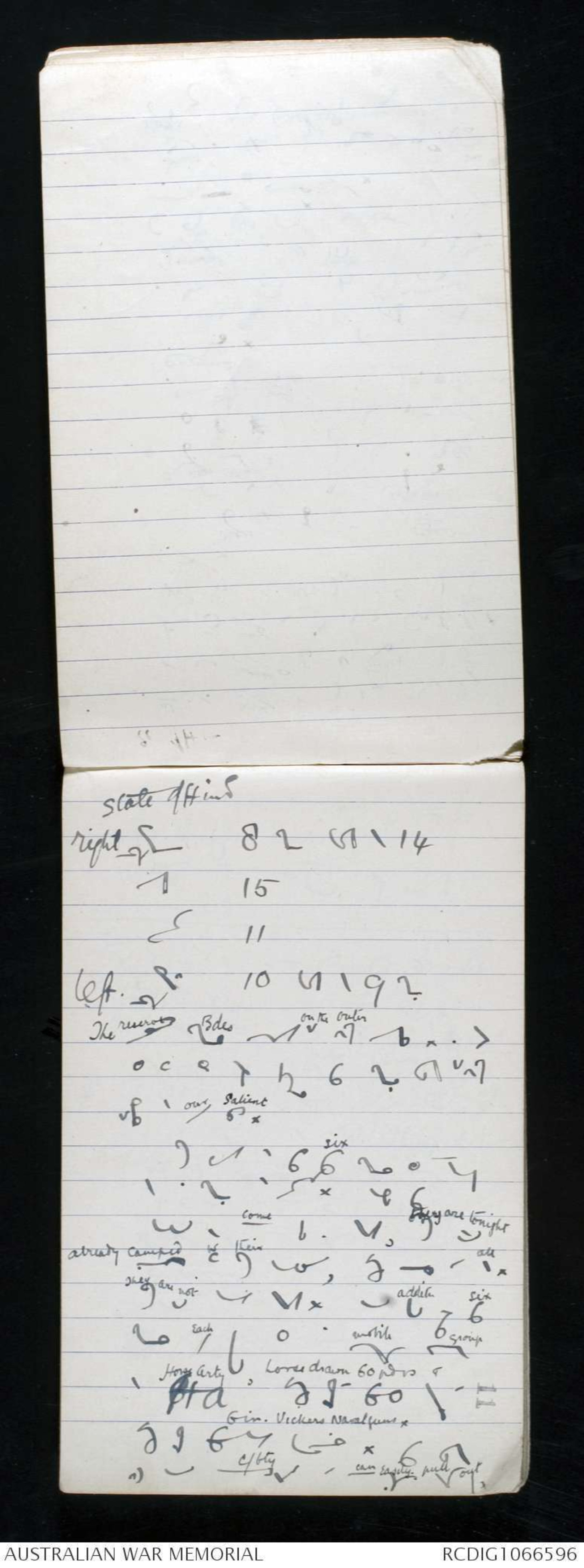
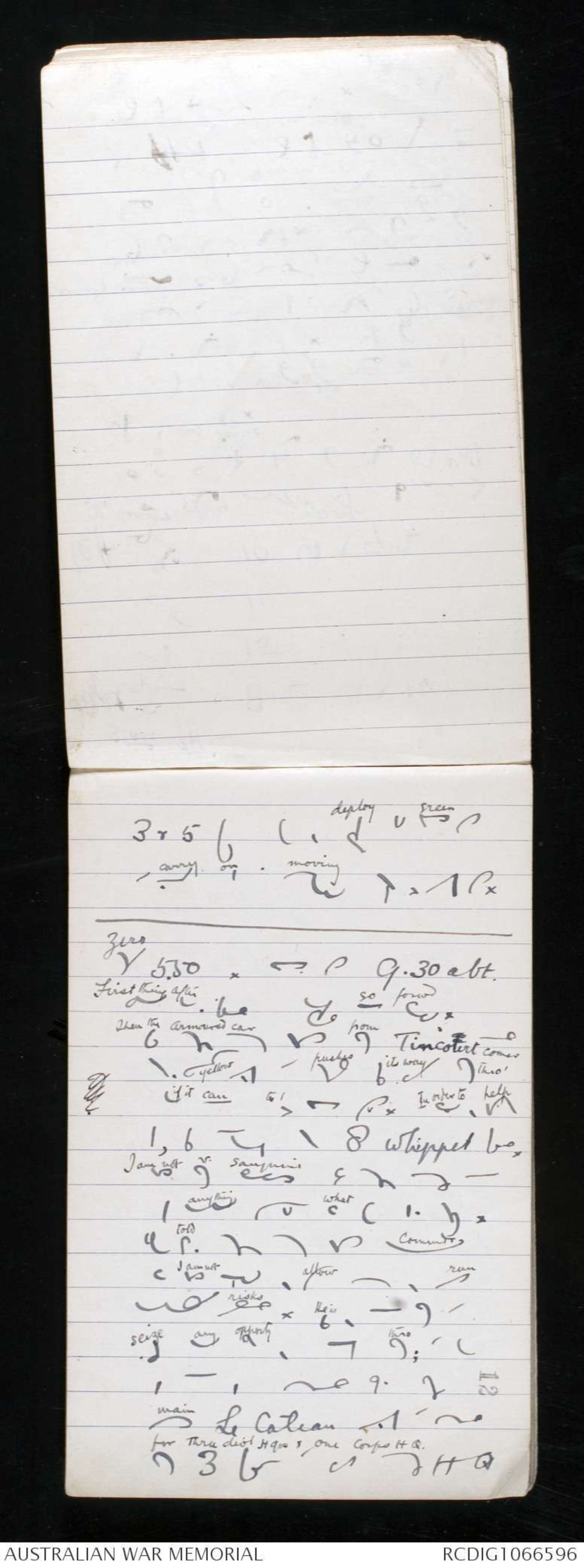
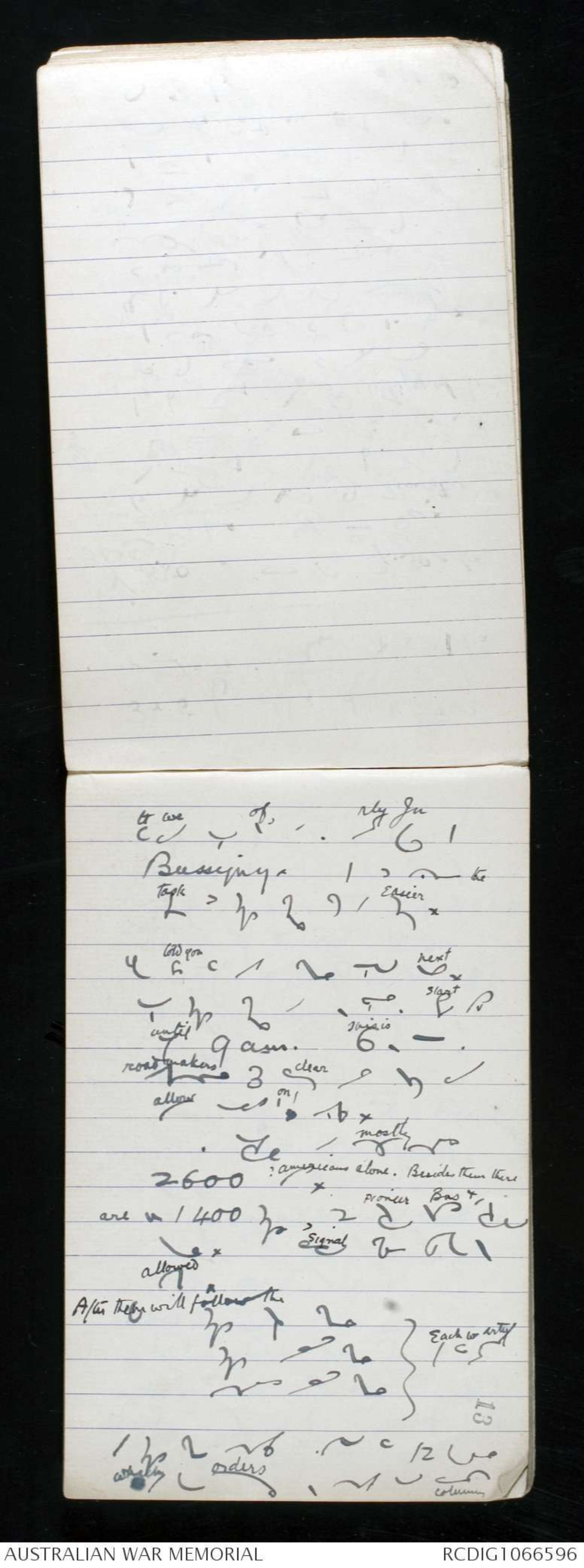
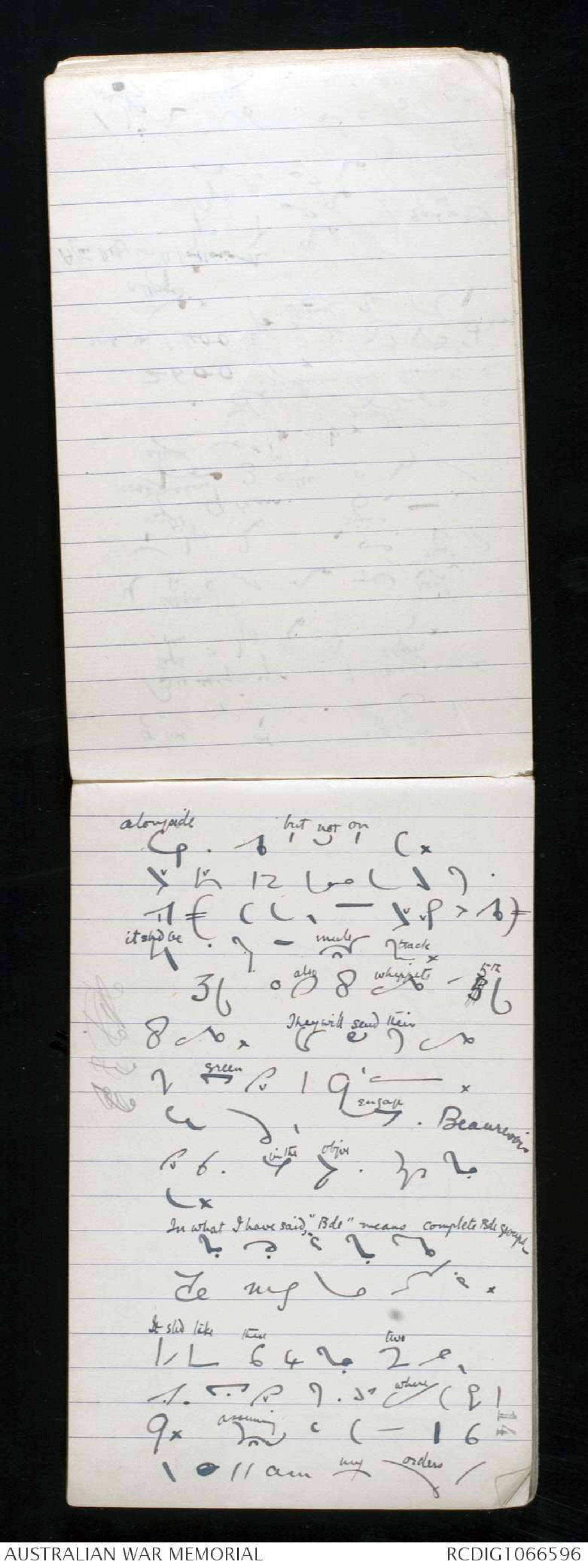

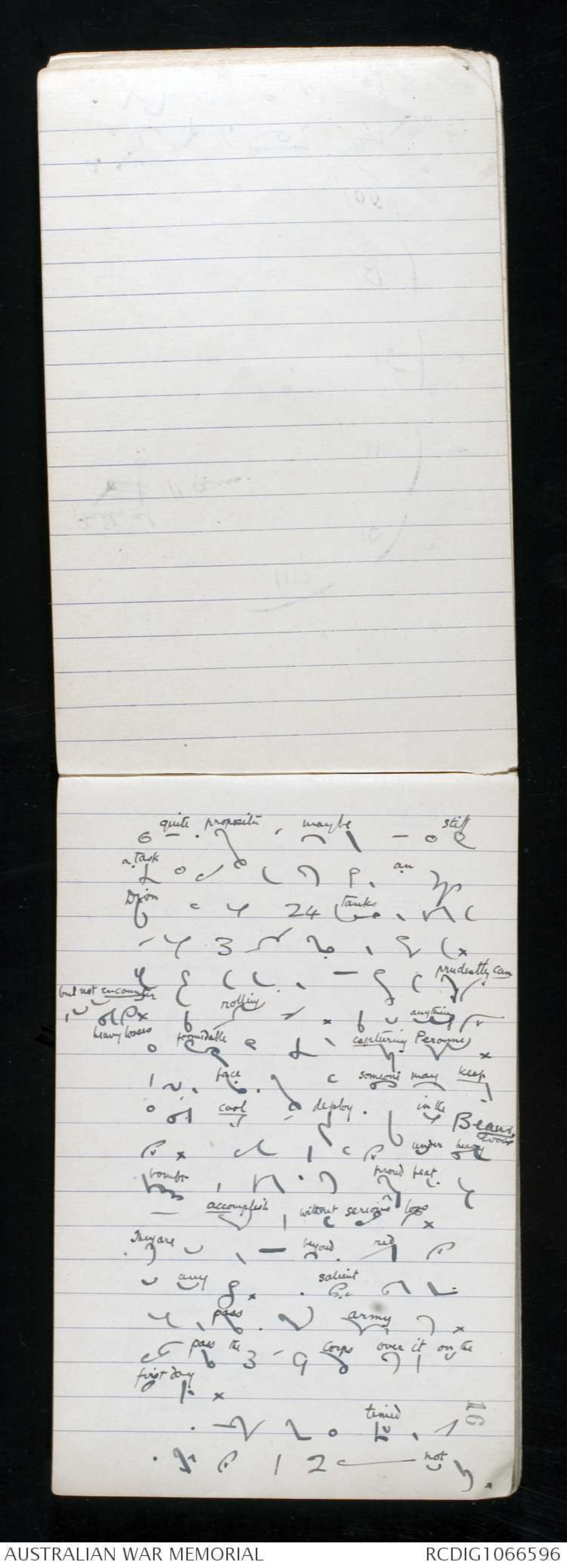

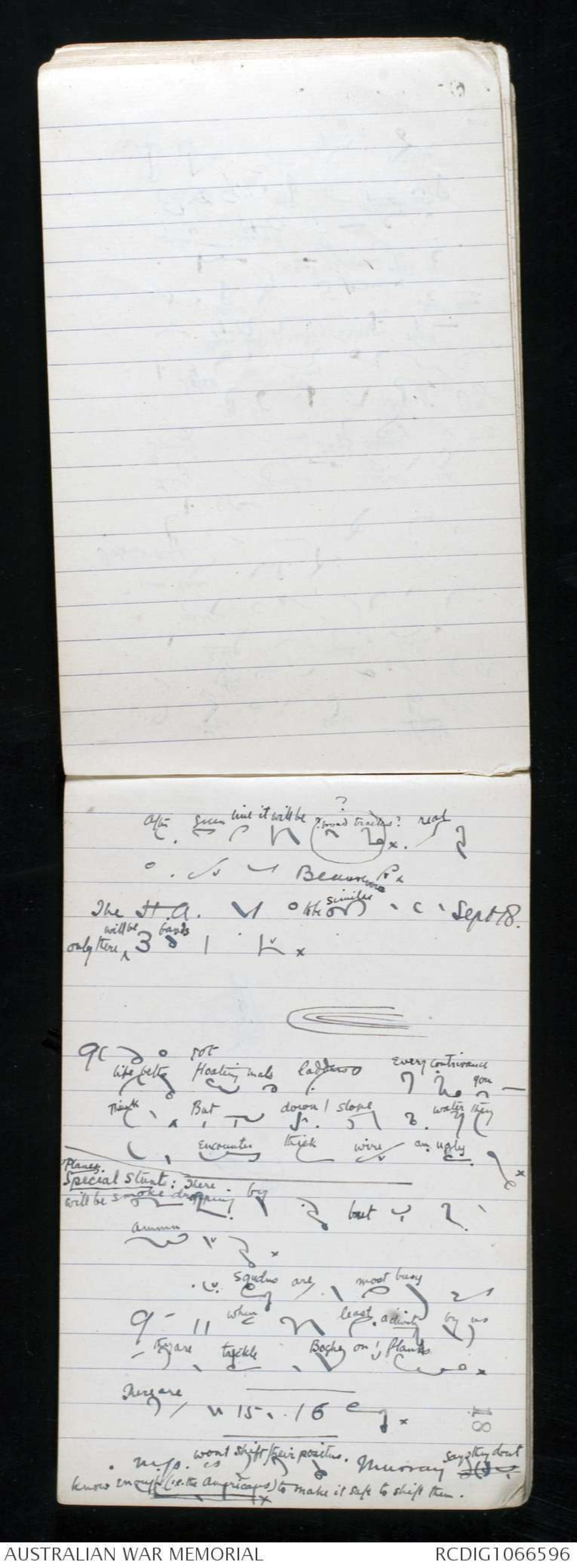
on. Murray is coordinating the
m.g. barrage in advancing bands.
Each division reckons to fire 1½ million rnds.
Now x comes the problem. Having carried the
infantry 4000 yards, that enormous distance
how are we going to get them further.
We have to get artillery forward.
We cannot do that without roads. We had
photos taken very low of all the area.
With the Chief Engr I have picked out 4 roads.
As far as we can go up to the tape line these
roads are completed for the bivouac lines where
they spend tonight are ready.
Immediately after zero tomorrow 4 very strong
gangs of engineers and pioneers will
follow the battle and spread these over the routes.
We will not bridge trenches on fill trenches
9
cut away wire and so on. If the trenches
are any worse then I suppose it will
take 3 hours to complete them to the Catelet
line beyond which I assume that there is open
country.
These 4 roads will be staked
and marked tomorrow by noticeboards
in these colours so that if a Bde
is told xx it will have to march
by the red route it will see the red
signboards.
The black and yellow roads will be
the best and will be developed for mechanical
transport. The first effort will be to organise
them for field artillery. Infantry at a pinch
can go across country.
Tonight the 4 Australian brigades with the reserve brigades
allotted to them have located (?) areas leading to
their various routes.
10
state of Hind
right cavalry black 8 brigade followed by 14
Red 15
Yellow 11
left cavalry blue 10 followed by 9 brigade
The reserve Bdes march on the outer roads. The object
is that as the battle develops these brigades will be on the outer
sides of our salient.
Every one of these six brigades is accompanied
by a brigade of artillery. In spite of this
anything to come out of the barrage, they are tonight
already camped with their infantry, horses, guns and all.
They are not in the barrage. In addition to these six
brigades each division has a mobile group
of Horse Arty, horse drawn 60 pdrs &
horse drawn 6 in. Vickers Naval Guns. These will be
used in counter-batteries and can easily pull out.
11
3 & 5 Division have to deploy on the green line
and carry on a moving battle to the red line.
Zero 5.50. Green line 9.30 abt.
First thing after the advance Engineers go forward.
Then the armoured car battalion from Tincoturt comes
up the yellow road and pushes its way thro'
[*?*] if it can to the green line. And in order to help
it, it is accompanied by 8 Whippet tanks.
I am not very sanguine that the armoured cars can
do anything like what they did before.
I have told the army area battalion commdr
that I am not going to allow him to run
unnecessary risks. He is to go there and
seize any opportunity to get thro; and if
he can he makes straight for the
main Le Cateau road and makes
for three divisional Hqrs & one Corps HQ
12
that we know of and the railway junction at
Bussigny. It would make the
task of the Australian troops very much easier.
I have told you what are the brigades going next.
No Australian troops are to cross the start line
until 9 a.m. This is to give the
roadmakers 3 clear hours before we
allow anyone on x / roads.
The engineers are mostly Americans
2600 ?Americans alone. Besides them there
are about 1400 Australians, 2 pioneer Bns & tunnelling
companies. Signal traffic will have to be
allowed.
After them will follow the Australian battle brigades }
Australian reserve brigades }
American reserve brigades } each w artillery.
Our Australian brigade marches along with 12 tanks
which have orders to march in column
13
alongside the roads but not on them.
By the time 12 tanks have been through the
road (they have to go by the side of the roads)
it should be a pretty good mule track.
3 Division has also 8 Whippets and 5 5th Division
8 Whippets. They will send their Whippets
from the green line at 9 'clock.
They have orders to engage the Beaurevoir
line which is the only objective the Australian brigades
have.
In what I have said, "Bde" means complete Bde groups.
Engineers mg companies artillery complete.
It should take these 4 brigades two hours to
reach the green line from point where they started at
9. Assuming that they can do this
by 11 am my orders are
[*[shorthand]*]
14
Diagram – see original document
A spreading battle then commences. The chief objective is
a powerful line at closest l mile at furthest 3 miles
15
That is quite a proposition and may be quite as stiff
a task as we have ever set to an Australian
Divn with only 24 tanks to help them
and only 3 artillery brigades to support them.
I have told them they have to go as far as they prudently can
but not encounter heavy losses. It is rolling country. It is not anything like
as formidable as the task of capturing Peronne.
But you have to face the proposition that someone may keep
his head cool and deploy a division in the Beaurevoir
line. We have had that line under heavy
bombardment but it will be a very proud feat if they
can accomplish it without serious loss.
They are not to go beyond the red line
in any circumstances. The salient will be big
enough to pass the British army there.
We will pass the 3 and 9 Corps over it on the
first day.
The cavalry brigade is timed to reach
the brown line at 2 o'clock not before.
16
Their objective is to seize a definite defend line
and if the enemy runs away they will have
to keep in touch with him.
We hope that we shall have to have a
? pure bare pursuit battle.
I don't think we can possibly continue on the
day following.
First our flanks will not be up.
Secondly we cannot I think supply our men
I don't think these roads will be adequate. On the 1st
day I shall have to move heavy artillery forward.
No Heavy Arty tractor drawn shall go
east to the start before 5 p.m. That gives
the roadmakers a good chance but after that the
lighter Heavy A. will go forward.
8 in, inch 9.2s, etc. will of course not start
at all till we can repair bridges.
17
After the green line it will be ?broad ? tracks?. The real trouble
is the wire in the Beaurevoir line.
The H.A. barrage has to be similar to that of Sept 18.
only there ^ will be 3 bands at a time.
Diagram - see original document
9th corps has got
life belts floating mats ladders every contrivance you can
think of. But going down the slope towards the water they
have to encounter thick wire an ugly proposition.
Planes.
Special stunts: There
will be smoke dropping by aeroplanes but no dropping of
ammunition by aeroplanes.
The fighting squadrons are to be most busy between
9 and 11 when there will be least activity by us and
they are to tackle the Boche on the flanks.
There are about 15 to 16 squadrons.
The m.gs. wont shift their positions. Murray says they dont says they don't know
know enough (i.e. the Americans) to make it safe to shift them.enough to do it.
 Maralyn K
Maralyn KThis transcription item is now locked to you for editing. To release the lock either Save your changes or Cancel.
This lock will be automatically released after 60 minutes of inactivity.